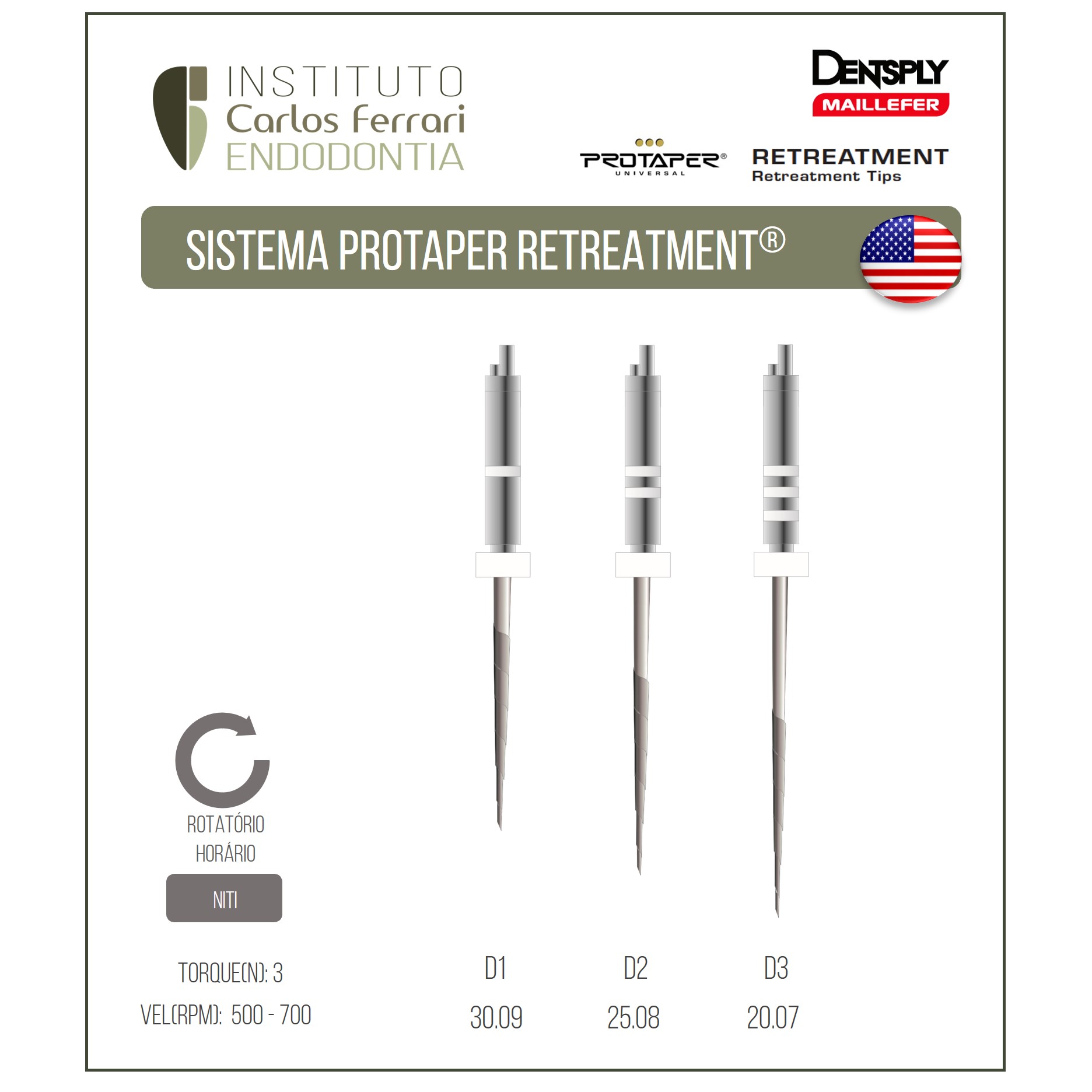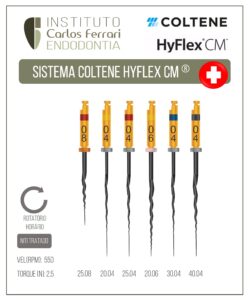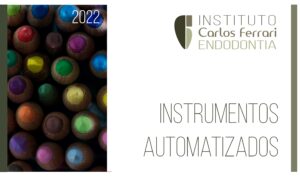
Limas Dentsply Protaper Retreatment. Descrição básica do sistema de limas rotatórias para retratamento sugerido para os alunos em nossos cursos, parte do guia para os principais sistemas disponíveis no Brasil.
Descrição do fabricante:
Lima para retratamento. D1-D2-D3. D1 é indicado para trabalho no 1/3 coronário do canal e possui ponta ativa. D2 e D3 apresentam ponta inativa e atuam nos terços médio e apical do canal, respectivamente.
• Menor chance de fratura. • Permite o trabalho em canais muito curvos e atresiados. • Maior economia. • Maior segurança ao profissional. • Maior eficiência na instrumentação. • Maior durabilidade dos instrumentos. • Maior rapidez no tratamento. • Menor stress do paciente e do profissional. • Menor risco de L.E.R. (Lesão por Esforço Repetitivo). • Tratamento sendo realizado em menos sessões (abre espaço para novos pacientes ou para sub-locação da sala) = maior receita. • Pode ser usado com facilidade e segurança por clínicos gerais e alunos de graduação. • Maior facilidade no aprendizado da cinemática de trabalho – menor risco de fratura. • Maior rapidez no tratamento. • Menor stress do profissional e do paciente. • Melhor limpeza. • Menor contato do instrumento com as paredes do canal. • Menor risco de fratura. • Fabricado em Níquel-Titânio: Maior resistência existente, Maior flexibilidade existente, Maior durabilidade. • Limas Rotatórias (acionadas a motor): Maior rapidez no tratamento, Simplicidade do uso, Movimento de pincelamento (igual ao das brocas Gates), Mandril possui apenas 13mm. • Multi-conicidade em um mesmo instrumento: Cada lima só trabalha onde é realmente necessário, Permite que o sistema tenha apenas 8 limas, Maior flexibilidade na ponta e maior resistência na base de cada instrumento. • Instrumentos mais fáceis de serem retirados em caso de fratura. • Requer nenhuma ou menos recapitulações. • Possui bordas cortantes com ângulo helicoidal variável: Maior poder de corte. • Espaço adequado para os debris retirados. • Não acontece o efeito parafuso Limas eletro-polidas: Menos imperfeições na superfície da liga. • Exclusivo sistema de retratamento.
Limas Dentsply Protaper Retreatment





